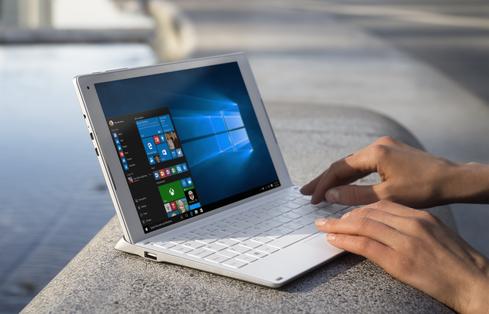Microsoft Surface Hub Finally Starts ShippingMicrosoft Surface Hub Finally Starts Shipping
Microsoft's Surface Hub promises to revolutionize the way companies collaborate and communicate, but are businesses ready to pay a hefty price to do so? The giant, Windows 10-based device starts at $9,000.


10 Windows 10 Hacks To Maximize Your Experience
10 Windows 10 Hacks To Maximize Your Experience (Click image for larger view and slideshow.)
Microsoft's Surface Hub, its oversized unified communications offering, is finally shipping to customers after a number of delays. This monster PC comes as a wall-mounted or roller stand-mounted device with an 84-inch, 120 Hz 4K, or a 55-inch 1080p, multi-touch and multi-pen screen.
Surface Hub starts at a hefty $9,000 for the smaller model, while the fully-loaded, 84-inch version retails for a whopping $21,999.
Microsoft made the formal announcement March 25.
Powered by Windows 10 operating system and designed from the ground up for ink and touch, the Surface Hub offers the collaboration and security features of Skype for Business, Office, OneNote, and Universal Windows apps.
To customize their experience, Surface Hub customers can visit the Windows Store for Business and download a variety of commercial-grade Windows 10 apps for doing things like viewing 3D modeling and CAD files, analyzing videos, and facilitating brainstorming and voting sessions, among others.
Among the applications that can be used on Surface Hub are: Buzz Radar, FluidMath, Power BI, The 3D Classroom, Portal Mindmap, Stormboard for Surface Hub, TechSmith Loop, SharpCloud, tuServ, Virbeya, and XOS ThunderCloud.

Create a culture where technology advances truly empower your business. Attend the Leadership Track at Interop Las Vegas, May 2-6. Register now!
There are plenty of "smart" features integrated in the Surface Hub that could contribute to seamless group productivity.
For example, meeting participants can write on the display or annotate images from a connected PC or tablet. The screen is then designed to recognize the difference between fingers and digital pens, so a presenter can manipulate content by hand and annotate with a pen.
Skype for Business can be used to write and edit text, invite participants, and collaborate via videoconference. Participants can also co-author documents and view pixel-by-pixel activity in real-time.
Microsoft originally announced the Surface Hub in January 2015, when the company first detailed its Windows 10 operating system. The original schedule had pre-orders starting in July, and shipments starting in September.
After that, Microsoft kept delaying the release of the device but did not offer an explanation. In a blog post announcing that the Surface Hub will finally ship, Brian Hall, general manager of Microsoft Devices Marketing, stressed the collaboration tools available to customers.
"We set out to build technology to unlock the power of teams much better. And we got customers, partners, our software team, and our hardware team together to build a first-of-its-kind new solution, Surface Hub," Hall wrote.
To back up its assertions, Microsoft released a report "The Total Economic Impact of Microsoft Surface Hub" commissioned by the company and authored by Forrester Consulting. The researchers worked with five Surface Hub early adopter customers to outline the costs, benefits, and risks for implementing the Surface Hub in a business environment.
The report indicated that companies that conducted meetings in rooms and collaboration spaces with a Surface Hub installed experienced a 75% improvement in remote attendee setup and post-meeting productivity, which saved about 15 to 20 minutes per hour-long meeting usually spent on setting up video or screen-sharing services and on completing meeting notes.
However, it remains to be seen how many businesses are willing to invest anywhere between $10,000 and $20,000 on the Surface Hub.

About the Author
You May Also Like






